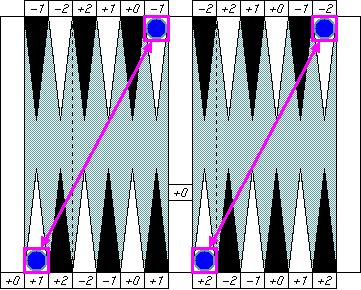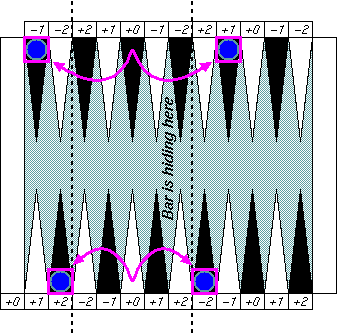Five-Count Part 4.3:
Common cancellation patterns in an adjustment
Created by Sho Sengoku, 2001
Five in a row
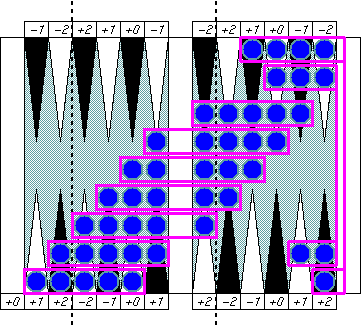
|
Checkers lined five in a row cancel all their error counts
no mater where they are.
This is because any five consecutive points have
all different error numbers from -2 to +2
but no duplications.
Check yourself about this,
and you will understand that a five
point prime in any location cancels
all error numbers in it at once.
|
Weak symmetric patterns
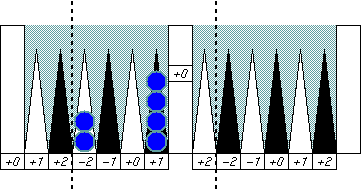
|
Not exactly symmetric,
but you can see they are "balanced"
on the group center (the 5 point in this example.)
A balanced pattern on a group center
always cancel its error numbers.
This pattern is very common
and you will often see the same pattern
in a real backgammon game.
|
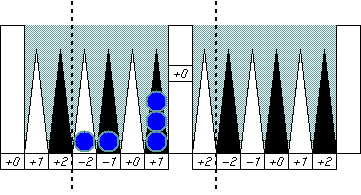
|
The same "balanced" pattern, and it cancels all errors at once.
|
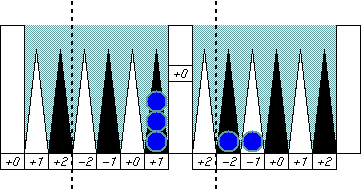
|
Not balanced as it is, but it would be balanced on the
9 point (the center of Group 2)
if the three checkers on the 6 point were
the 11 point.
Or you can think that it is a weak symmetric around a group
boundary and cancels all error numbers at once.
|
Diagonal corners in a box
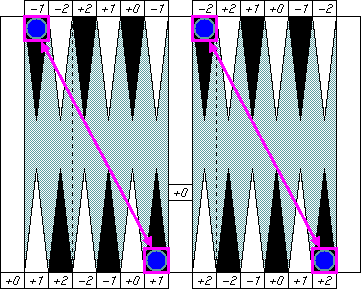
|
Any pair of checkers on diagonal corners of the left side or
the right side of the bar cancels error numbers together.
|
Distant symmetric patterns
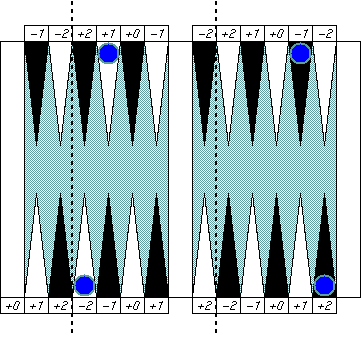
|
This "distant symmetric" pattern may be
a bit harder to catch at a glance.
That's partly because they are many pips away,
but mainly because the bar cuts off the board
in two and change our perception of distance.
If you removed that big bar form the board view,
then you could easily see good symmetric patterns.
|
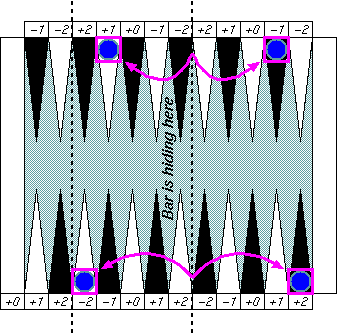
|
You can't just erase the bar from
a real backgammon board of course.
If you don't like this "fake" board image,
then just compare two checkers' locations in the group boxes,
and you may find symmetry there.
|
Continue on to: Summary of Sho's Pip Count, "Five-Count"
See: Other articles by Sho Sengoku
See: Other articles on Pip Counting
Return to: Backgammon Galore : Articles





